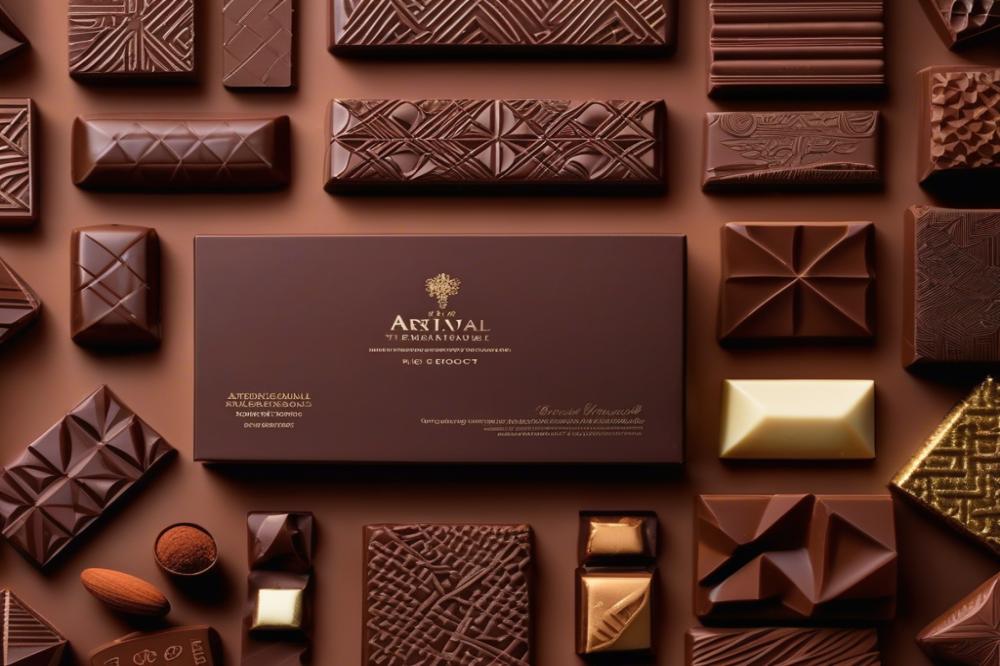The Revival of artisanal chocolate in the 21st Century
Chocolate has a rich history that dates back thousands of years. The ancient Mayans and Aztecs cherished cocoa, using it in rituals and as a currency. Over the centuries, chocolate transformed from a bitter drink to the sweet treat we savor today. Innovations in production have shaped its journey, creating beloved varieties around the globe.
In recent years, a new movement has emerged. craft chocolate has captured the hearts of many. This movement embraces small-batch, bean-to-bar chocolate making, elevating a simple sweet into a gourmet experience. artisanal chocolate celebrates the art of quality over quantity, sourcing beans directly from farmers and focusing on ethical practices. These producers offer a refreshing approach in a world filled with mass-produced options.
Why is this chocolate revival important? Today’s consumers are more conscious than ever. Many wish to support sustainability and ethical sourcing. This awareness drives chocolate trends and encourages brands to adopt responsible practices. A shift towards more meaningful consumption is taking place. Many chocolate makers not only create delightful treats but also educate about ingredients and processes.
People now crave authenticity in their food. They seek out artisanal sweets that are unique and have a story to tell. The growth of chocolate education has helped spread awareness about how beans are transformed into bars. Newfound appreciation for craftsmanship in chocolate making has solidified its place in the culinary landscape of the 21st century. This revival signifies a return to values that prioritize quality and care over mass production.
The Historical Journey of Chocolate
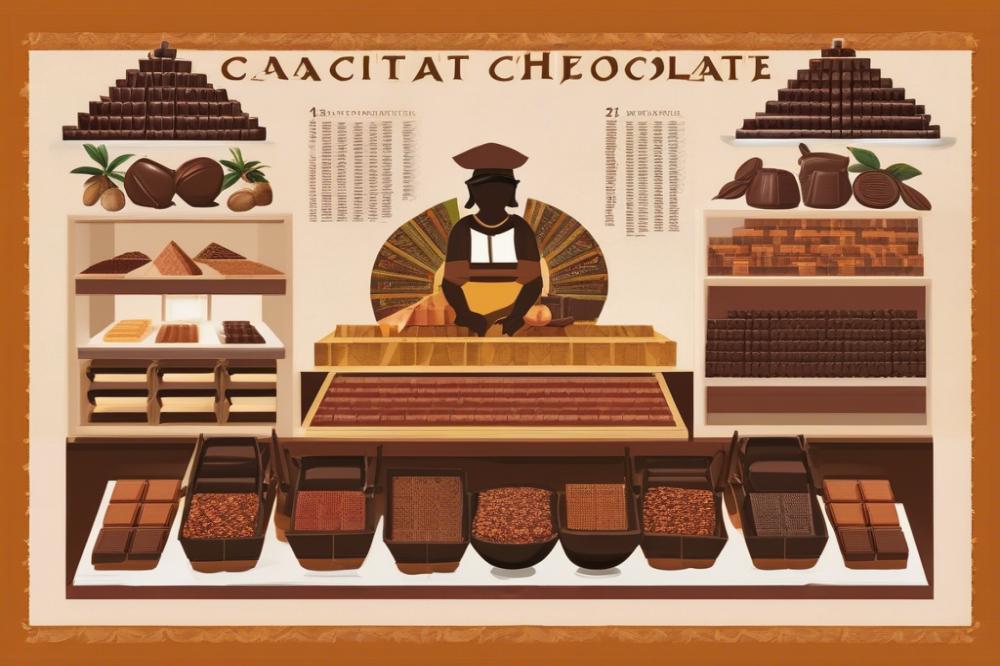
Chocolate has a fascinating history that begins in Mesoamerica. The ancient Olmecs were among the first to use cacao. They believed in its magical properties. Later on, the Mayans and Aztecs embraced chocolate, often as a frothy drink flavored with spices. It was reserved for nobility and used in rituals. This beverage became a symbol of wealth and power.
As time went on, chocolate evolved from a drink into solid form. In the 19th century, significant innovations transformed how we consumed this beloved treat. A process discovered by mixing cocoa butter with powdered chocolate paved the way for solid bars. This new form quickly gained popularity. No longer just a drink, chocolate became easily accessible and enjoyed by many.
The Industrial Revolution played a critical role in mass production. Factories began producing chocolate on a large scale, making it affordable for everyone. Machines replaced much of the traditional chocolate making by hand. However, this shift brought about concerns about quality and authenticity. Consumers started becoming more aware of what they were eating, sparking a desire for craft chocolate.
In recent years, there has been a noticeable resurgence in artisanal sweets. Trends like bean-to-bar and small batch production have gained traction. Artisans emphasize ethical sourcing and sustainability, which resonate with many consumers today. Gourmet chocolate makers focus on unique flavor profiles and premium ingredients. Chocolate education has become essential, helping people appreciate the journey from bean to their favorite treat.
Understanding Artisanal Chocolate
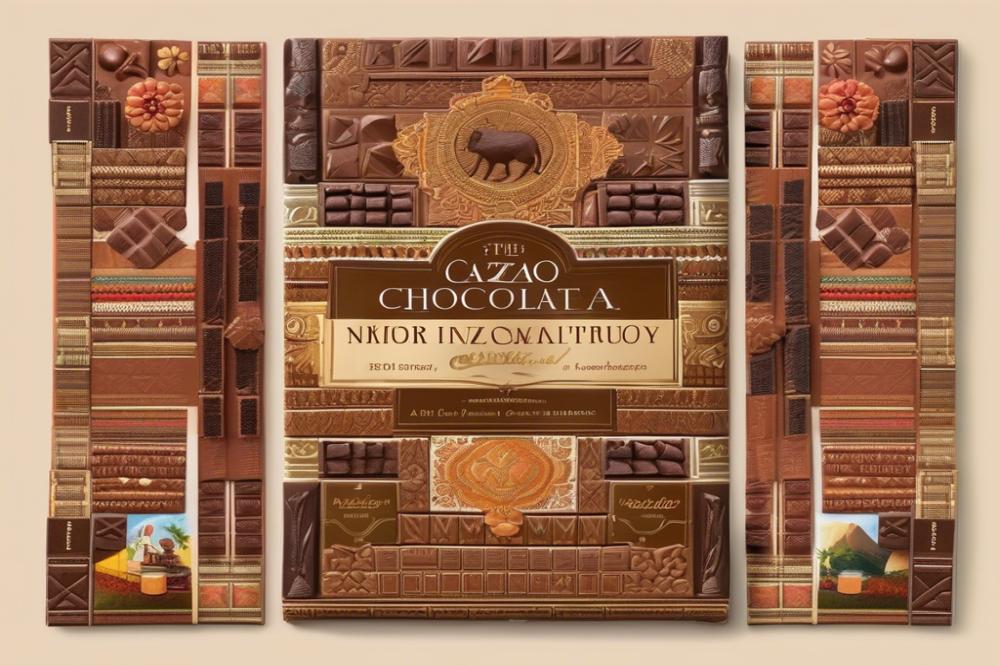
Artisanal chocolate represents a dedication to quality and craftsmanship. This type of chocolate is made in small batches, allowing for greater attention to detail. Each piece is crafted with care, focusing on rich flavors and premium ingredients. Characteristics such as unique textures and bold tastes define this chocolate. It celebrates the art of chocolate making, showcasing a variety of regional beans and flavors.
Mass-produced chocolate operates on a different scale. Factory-made treats often prioritize yield and efficiency over quality. These chocolates typically contain additives and fillers, reducing the complexity of flavors. In contrast, artisanal creations highlight the natural origins of their ingredients. Chocolatiers take pride in their craft, emphasizing ethical sourcing and sustainable practices. This commitment to quality allows consumers to savor the distinctions in flavor and texture.
Craft Chocolate and Bean-to-Bar Methods
Craft chocolate is a term that’s gaining popularity. It refers to a more hands-on approach to production. The bean-to-bar method is a key part of this trend. This process involves taking cacao beans and transforming them into chocolate right from scratch. It allows makers to control input at every stage, from sourcing to the final product.
Chocolate education has become important in this revival. Many artisans want consumers to understand what makes their product special. This includes knowledge about various cacao origins and how they affect flavor. The trend surrounding gourmet chocolate also embraces creativity and innovation. Chocolatiers often experiment with flavors, adding spices or fruits, resulting in fresh combinations that excite taste buds.
Sustainability is a significant aspect of this movement. Many producers prioritize fair trade practices and ethical sourcing to protect both the environment and the farmers. It’s not just about making sweets; it’s about making a difference. Those who enjoy artisanal sweets can feel good knowing they support responsible methods. This consideration fosters a deeper connection between the consumer and the chocolate they enjoy.
Chocolate Trends in the 21st Century
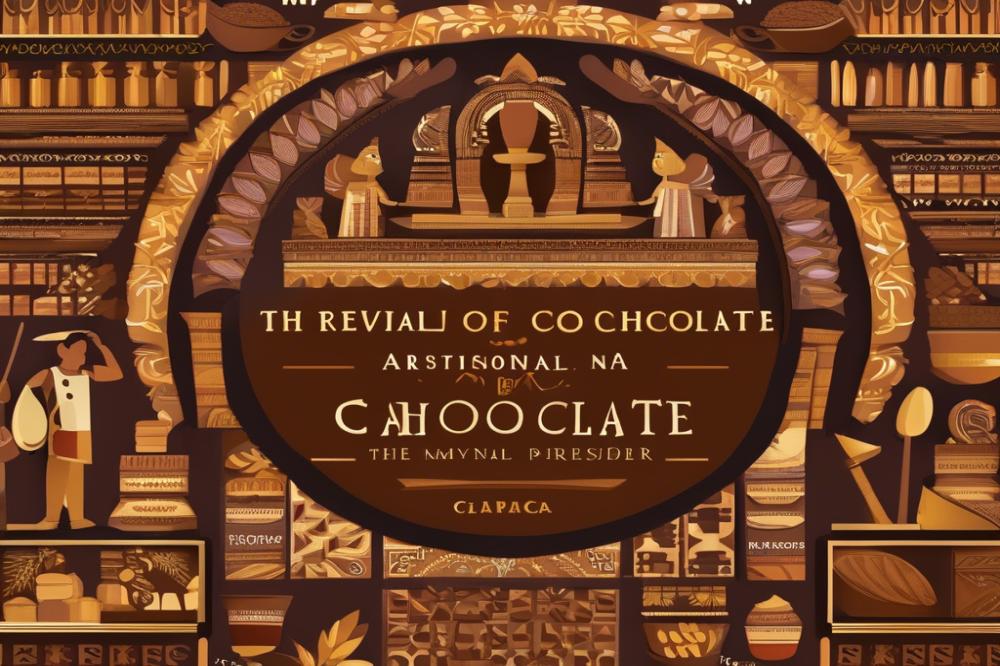
The revival of interest in small batch chocolate making has transformed the industry in exciting ways. Craft chocolate has gained traction among connoisseurs and casual consumers alike. This phenomenon emphasizes thoughtful techniques, fresh ingredients, and an intimate connection between makers and their creations. Chocolate lovers are now seeking products that promise quality over quantity.
Emerging gourmet chocolate brands are reshaping the landscape. These companies focus on premium ingredients and innovative flavors. Customers are eager to try bean-to-bar options that showcase the rich diversity of cocoa origins. Chocolatiers often highlight their ethical sourcing practices, appealing to those who care about where their sweets come from. This commitment to sustainability sets these brands apart in a crowded market.
Social media plays a vital role in the success of these chocolate trends. Influencers and chocolate makers showcase their creations on platforms like Instagram and TikTok. Engaging content helps educate customers about different types of chocolates and how they are made. Chocolate education is now just a click away. Enthusiastic discussions around artisanal sweets inspire others to explore and experiment. Audiences can follow their favorite brands, gaining insights into the chocolate making journey from bean to bar.
As more people become aware of chocolate’s diverse offerings, the market expands. The desire for unique experiences drives consumers to seek out flavors and textures they’ve never tried before. Small batch craftsmanship appeals to those who want to savor every bite. The attention given to every detail ensures that each bar offers something special. These chocolate trends reflect a broader shift toward quality, understanding, and appreciation in the culinary world.
Ethical Sourcing and Sustainability
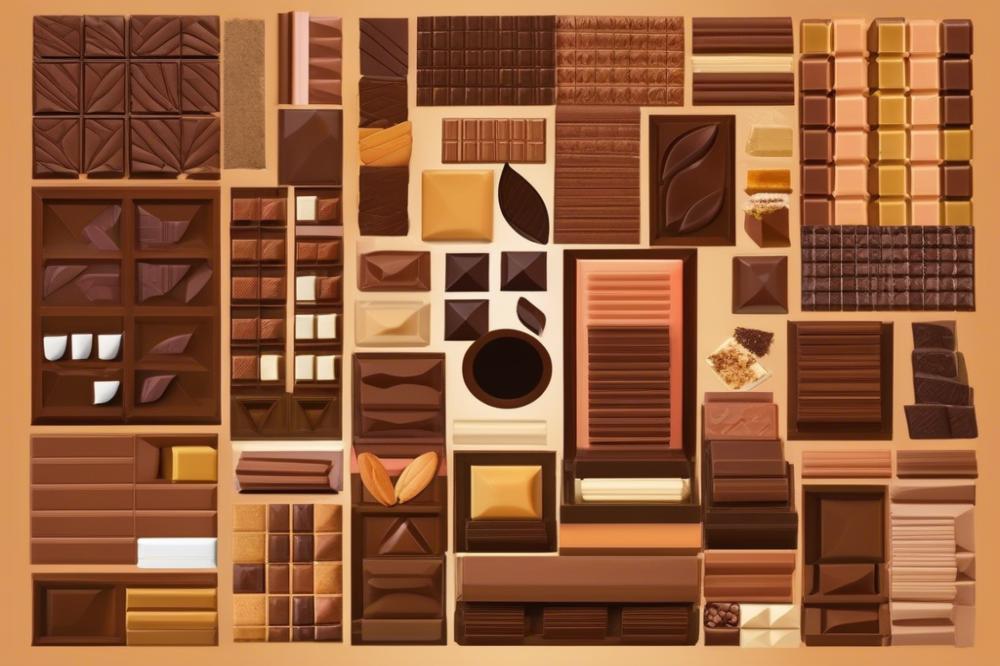
Ethical sourcing plays a crucial role in the chocolate industry today. Consumers are becoming more aware of where their food comes from. They want to support brands that prioritize fair treatment of farmers. This movement is especially strong among those who appreciate craft chocolate. Not only does it improve farmer livelihoods, but it fosters a sense of community.
Artisanal chocolate makers focus on sustainable practices. These producers often work closely with cocoa farmers. They seek out small batch methods that highlight quality over quantity. Sustainable practices include organic farming and fair trade certifications. Many companies invest in chocolate education, teaching farmers better practices for growing quality cacao.
However, sourcing quality cocoa is not without challenges. Climate change affects harvests, making it harder to find the best beans. Price fluctuations can impact farmers’ income, leading to uncertainty. Additionally, ethical sourcing requires building strong relationships with farmers. Trust and transparency are essential, yet difficult to achieve in some regions.
Chocolate trends show a growing preference for gourmet chocolate. Consumers are willing to pay a premium for products that align with their values. This demand drives artisanal sweets makers to prioritize sustainability in their operations. The bean-to-bar movement highlights these efforts, creating a direct connection between maker and farmer.
In summary, the revival of artisanal chocolate hinges on ethical sourcing and sustainability. The commitment to these principles not only enhances flavor but also uplifts communities. As consumers demand more transparency, the future of chocolate making looks promising.
Chocolate Education and Community Engagement
In recent years, the popularity of chocolate-making workshops and classes has grown significantly. People want to learn the art of producing craft chocolate themselves. From bean-to-bar techniques to understanding flavor profiles, these hands-on experiences offer deep insights. Participants can appreciate the raw materials and the processes behind gourmet chocolate. Many local artisans host these sessions, creating a space for learning and enjoyment. Engaging in chocolate making fosters a sense of connection within the community.
Another significant aspect is the rise of tasting events. These gatherings allow consumers to sample different varieties and learn about the diverse world of chocolate trends. Attendees can compare flavors, textures, and even origins, which creates a memorable experience. Sharing knowledge about ethical sourcing is crucial at these events. As people taste, they often gain a better understanding of the stories behind each product. This experience also motivates them to support small batch producers who prioritize sustainability.
Consumer education plays a vital role in chocolate selection. With access to information, shoppers are making informed choices. Understanding how artisanal sweets differ from mass-produced options can improve the enjoyment of chocolate. When people know about the care put into small batch production, they tend to choose those products over conventional brands. They appreciate the craftsmanship and the attention given to flavor and quality. As a result, education leads to greater demand for ethically sourced, high-quality chocolate.
Overall, the growing emphasis on chocolate education and community engagement has transformed the way people relate to this delicious treat. Workshops empower individuals to explore their creativity. Tasting events inform and connect chocolate lovers. Ultimately, these activities create a more aware and passionate consumer base. This revival of interest in artisanal chocolate is fueled by these experiences.
The Future of Artisanal Chocolate
Predictions for the artisanal chocolate market suggest exciting times ahead. More people are seeking out craft chocolate made with intention and care. Growth in consumer awareness around ethical sourcing plays a vital role. Shoppers want products that align with their values. This trend likely points to increased demand for small batch creations. As sustainability emerges as a key focus, many brands are stepping up to deliver on these wishes.
Innovation in flavors and techniques will shape the future landscape of chocolate making. Makers are experimenting with exotic spices, fruits, and even herbs to create new taste experiences. The bean-to-bar movement has encouraged artisans to push boundaries, leading to unexpected combinations. Think of unexpected pairings: chili-infused dark chocolate or lavender and sea salt blends. Such adventurous flavors will cater to a wide range of palates and preferences.
Artisanal sweets will continue to persevere in a competitive landscape filled with mass-produced options. Consumers appreciate the personal touch that comes with gourmet chocolate. Social media plays a big role in this appreciation, as influencers share their love for unique creations. The growing popularity of chocolate education empowers consumers to make informed choices. By understanding the craft behind chocolate, they develop a deeper connection to the product.
Final Thoughts on the Artisanal Chocolate Movement
The resurgence of craft chocolate has taken the culinary world by storm. This movement highlights the importance of quality and the artistry behind chocolate making. Many consumers are now eager to explore the rich flavors that bean-to-bar processes can offer. They appreciate the stories behind each bar and the care involved in production. Like a fine wine, artisanal products engage the senses in a thoughtful way, creating memorable experiences.
Cultural significance goes beyond just taste. The revival fosters a connection with local producers and encourages sustainable farming practices. More people are prioritizing ethical sourcing. This shift influences customs and dining experiences everywhere. It’s not just about chewing on a sweet treat anymore. Chocolate has transformed into a symbol of community and craftsmanship.
Looking ahead, potential opportunities seem promising. Markets for these delicacies are expanding rapidly. As knowledge about flavor profiles grows, consumers will likely seek out more diverse options. Innovators in the industry are discovering exciting pairings that challenge conventional norms. The future is bright for those who embrace creativity in this craft.
In summary, the movement emphasizes quality, sustainability, and community engagement. It invites everyone to appreciate chocolate beyond its surface sweetness. This evolution shows that artisanal chocolate is not just a trend; it’s a celebration of rich history and future possibilities.

